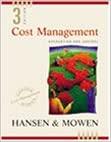Question
Pirate Corporation acquired 60 percent ownership of Ship Company for $96,000 on January 1, 20X8, at underlying book value. At that date, the fair value
Pirate Corporation acquired 60 percent ownership of Ship Company for $96,000 on January 1, 20X8, at underlying book value. At that date, the fair value of the noncontrolling interest was equal to 40 percent of the book value of Ship Company. Accumulated depreciation on Buildings and Equipment was $75,000 on the acquisition date. Trial balance data at December 31, 20X9, for Pirate and Ship are as follows:
| Pirate Corporation | Ship Company | ||||||||||||||||
| Item | Debit | Credit | Debit | Credit | |||||||||||||
| Cash | $ | 18,000 | $ | 11,000 | |||||||||||||
| Accounts Receivable | 45,000 | 21,000 | |||||||||||||||
| Inventory | 40,000 | 30,000 | |||||||||||||||
| Buildings & Equipment | 585,000 | 257,000 | |||||||||||||||
| Investment in Row Company | 44,000 | ||||||||||||||||
| Investment in Ship Company | 116,400 | ||||||||||||||||
| Cost of Goods Sold | 170,000 | 97,000 | |||||||||||||||
| Depreciation Expense | 30,000 | 10,000 | |||||||||||||||
| Interest Expenses | 8,000 | 3,000 | |||||||||||||||
| Dividends Declared | 40,000 | 20,000 | |||||||||||||||
| Accumulated Depreciation | $ | 170,000 | $ | 95,000 | |||||||||||||
| Accounts Payable | 75,000 | 24,000 | |||||||||||||||
| Bonds Payable | 100,000 | 50,000 | |||||||||||||||
| Common Stock | 200,000 | 100,000 | |||||||||||||||
| Retained Earnings | 231,000 | 70,000 | |||||||||||||||
| Accumulated Other Comprehensive Income | 6,000 | 10,000 | |||||||||||||||
| Other Comprehensive Income from Ship Company (OCI)Unrealized Gain on Investments | 2,400 | ||||||||||||||||
| Unrealized Gain on Investments (OCI) | 4,000 | ||||||||||||||||
| Sales | 250,000 | 140,000 | |||||||||||||||
| Income from Ship Company | 18,000 | ||||||||||||||||
| $ | 1,052,400 | $ | 1,052,400 | $ | 493,000 | $ | 493,000 | ||||||||||
Additional Information Ship purchased stock of Row Company on January 1, 20X8, for $30,000 and classified the investment as available-for-sale securities. The value of Rows securities increased to $40,000 and $44,000, respectively, at December 31, 20X8, and 20X9. Assume that depreciation expense was $10,000 for the previous year as well.
Prepare a three-part consolidation worksheet for 20X9 in good form.
| PIE CORPORATION AND SUBSIDIARY | |||||
| Worksheet for Consolidated Financial Statements | |||||
| December 31, 20X9 | |||||
| Consolidation Entries | |||||
| Pie Corp. | Slice Co. | DR | CR | Consolidated | |
| Income Statement | |||||
| Sales | |||||
| Less: COGS | |||||
| Less: Wage expense | |||||
| Less: Depreciation expense | |||||
| Less: Interest expense | |||||
| Less: Other expenses | |||||
| Income from Slice Company | |||||
| Consolidated net income | |||||
| NCI in net income | |||||
| Controlling Interest in Net Income | |||||
| Statement of Retained Earnings | |||||
| Beginning balance | |||||
| Net income | |||||
| Less: Dividends declared | |||||
| Ending Balance | |||||
| Balance Sheet | |||||
| Cash | |||||
| Accounts receivable | |||||
| Inventory | |||||
| Land | |||||
| Buildings and equipment | |||||
| Less: Accumulated depreciation | |||||
| Investment in Slice Company | |||||
| Goodwill | |||||
| Total Assets | |||||
| Accounts payable | |||||
| Wages payable | |||||
| Notes payable | |||||
| Common stock | |||||
| Retained earnings | |||||
| NCI in NA of Slice Company | |||||
| Total Liabilities and Equity | |||||
Step by Step Solution
There are 3 Steps involved in it
Step: 1

Get Instant Access to Expert-Tailored Solutions
See step-by-step solutions with expert insights and AI powered tools for academic success
Step: 2

Step: 3

Ace Your Homework with AI
Get the answers you need in no time with our AI-driven, step-by-step assistance
Get Started


